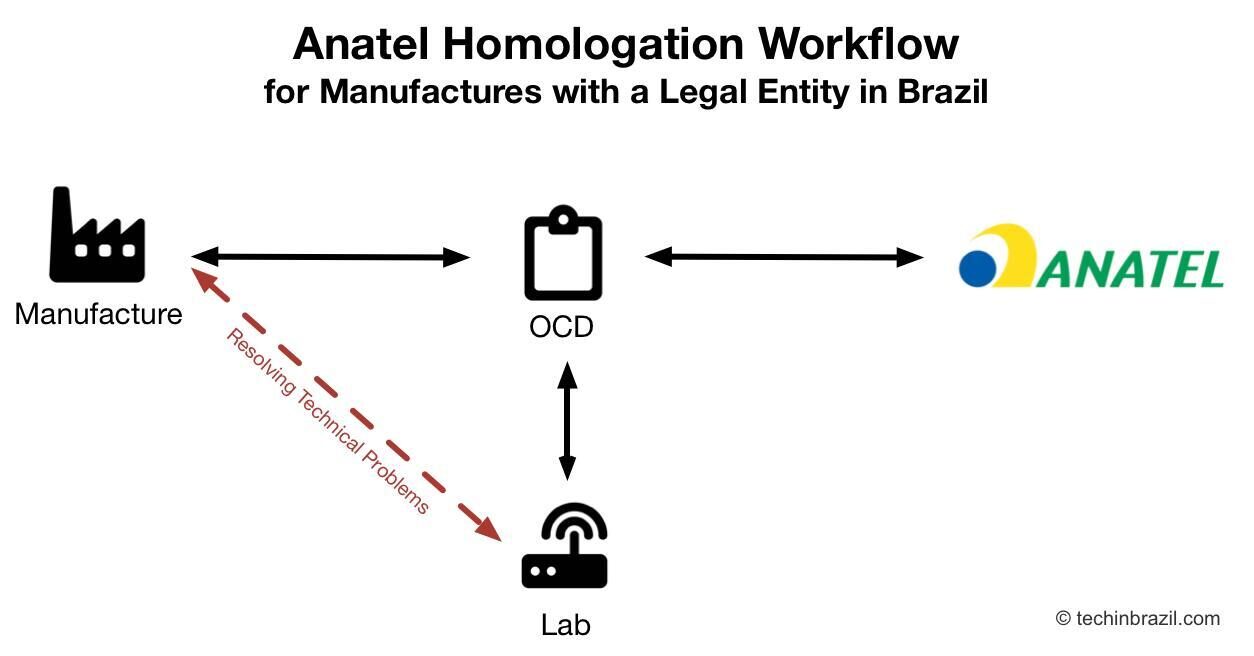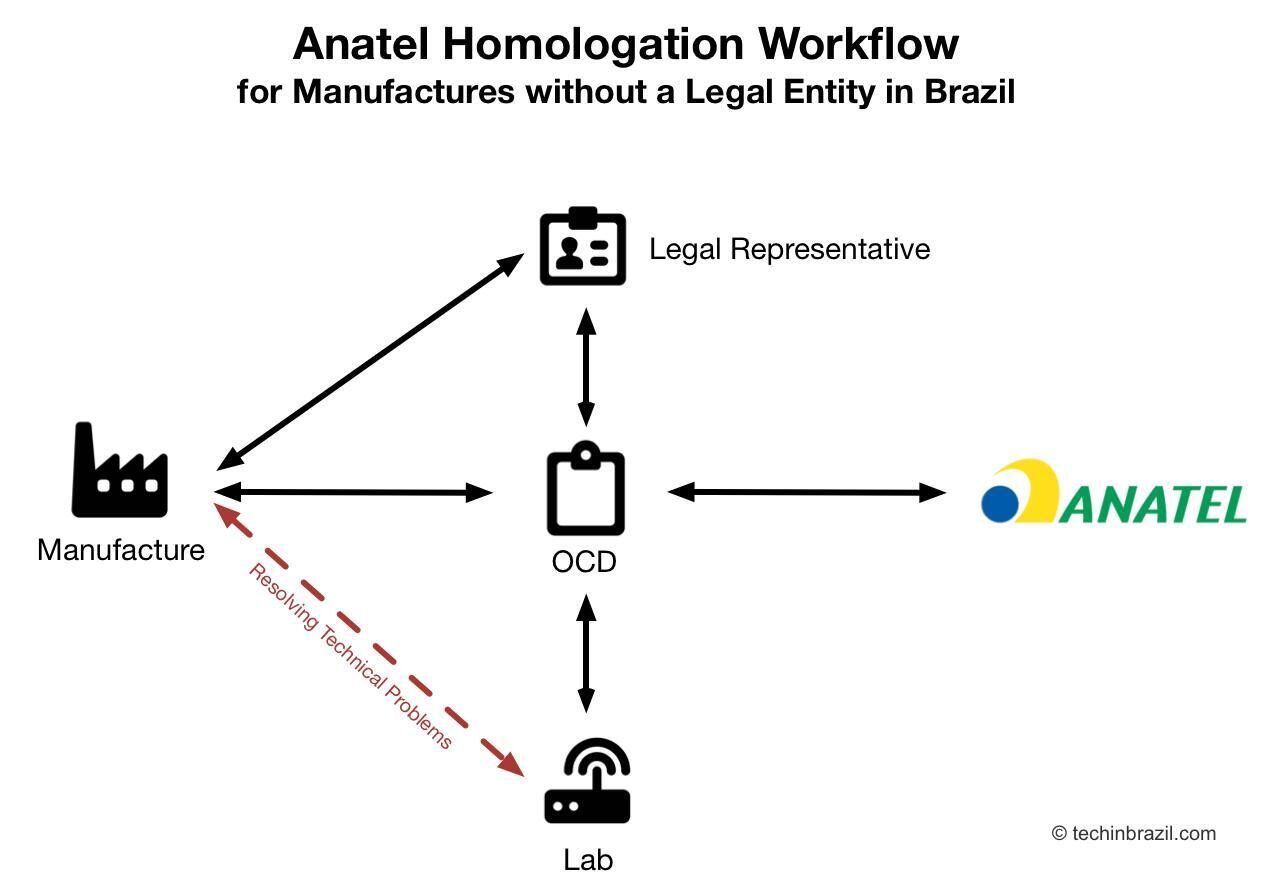How to Obtain an Anatel Product Homologation
Last updated: 9 December 2014
Telecommunication products and accessories are required to have a certification and homologation by the Brazilian Telecommunication Agency (Anatel) in order to be legally commercialized and used in the country.
In this article we will explain what is the Anatel homologation of a product and what are the main steps to get it.
Telecommunication products regulated by other countries’ organizations like the Federal Communications Commission are not allowed to be used or traded within Brazilian territory without homologation by Anatel.
The definition of “telecommunication product” can be very broad, so Anatel defines it as equipment, apparatus, device or element that comprises means necessary or sufficient to achieve telecommunication. Telecommunication is the wired, wireless, optical or any other electromagnetic process that transmits, emits or receive symbols, signals and any other information.
By this definition, products such as cell phones, modems, wi-fi routers and even RC toys and walkie-talkies need homologation by Anatel to be commercialized in Brazil. Telecommunication products must also have their parts and accessories, such as batteries and charging cables tested and homologated separately.
Product Categories
The products can be divided into 3 categories by Anatel, and each of the categories have different requirements that should be fulfilled in order to obtain the homologation.
Category I
The telecommunication products that fall into category I are the terminals which are intended to be used by the end user. To obtain this certification, the product must go through laboratory tests (performed by a lab accredited by Inmetro) and if the manufacturer does not have the ISO 9000 certification, Anatel has procedures to evaluate the manufacturing process which includes visits to the manufacturing plant.
In addition to that, the product must go through annual reevaluations to maintain the certification. The reevaluation process for a category I product consists of going through a simplified lab testing according to Anatel regulation.
Category I products include:
- Mobile phones
- Satelite phones
- VOIP phones
- Mobile phone batteries
- Mobile phone charging cables
- Phone signal cables
- Modems
Category II
Products of category II are those which are not included in Category I, but yet makes use of the radio-electrical spectrum for signal transmission. Similarly to category I, products in category II are required laboratory testing and bi-annual reevaluations to keep a valid homologation at Anatel. Reevaluation for a category II product refers to checking documentation to assure the product specifications remain the same as what was tested the first time, and no laboratory testing is required.
Category II products include:
- TV and radio antenna, receivers and transmitters
- Wi-fi equipment
- RF automation devices
Category III
Products that neither belong to category I or II are classified in category III, which will ensure that the product complies with Brazilian laws in terms of interoperability, reliability and electromagnetic compatibility. These products do not require reevaluations for now, but still must be approved in the laboratory tests.
Category III products include:
- Optical fiber cables
- Cable connectors
- Mobile network signal transmitters
How to obtain the Anatel homologation
The first step to obtain the homologation of a product is to select an OCD (Organismo de Certificação Designado). OCD is a third party institution appointed by Anatel that evaluates products and issues a certification based on tests conducted by a laboratory accredited by Inmetro. The OCD will recommend the applicant a laboratory based on the technical specifications of the product.

The homologation process can be initiated after registration on Anatel’s website and contact with an OCD. The following information needs be presented to the OCD for the application of a product:
- Information about the applicant for the Certification (Dados do Solicitante da Certificação)
- Information about the manufacturer
- Information about the manufacturing plant
- User manual
- Product manual
- Technical specifications
- Internal and external product photographs
- Test reports
- Electrical scheme (if specifically required)
- ISO 9001 Certification of the manufacturing plant (for category I products or if there are multiple manufacturing plants)
Once the product receives initial certification by Anatel and the OCD, a suitable laboratory is chosen based on the product’s testing specifications and needs, and the test process is started.
The number of samples needed for testing varies according to the product category. The OCD certificate for devices such as cell phones and tablets can be emitted by the evaluation of a single sample, but multiple ones can be sent to testing to speed up the process. Product manufacturers usually send four to six samples of these products to quicken the testing process. Other products require a minimum number of samples to be tested. For example, lithium batteries regulation requires 54 samples to be subjected to testing.
Most of the testing performed by the laboratories revolve around certifying the products resistance to electrical and electromagnetic abnormalities, guaranteeing the product’s performance after long periods of use and making sure it meets safety requirements.
After receiving approval from the laboratory, the OCD proceeds to issue a certificate necessary for the homologation by Anatel. There are different certificates issued by OCD’s depending on product categories and use:
- Declaration of Conformity: applicable to hand-crafted products not intended for commercialization
- Declaration of Conformity with Analysis Report: applicable to the instance where the application cannot be evaluated by an OCD within 3 months and will require evaluation by Anatel itself
- Certification of Conformity with System Quality Evaluation: certification document applied to Category I products
- Certification of Conformity Based on Type Analysis and Periodic Evaluation of the Product: certification document applied to Category II products
- Certification of Conformity Based on Type Analysis: certification document applied to Category III products
The documentation asked for the Certificate of Conformity issued by the OCD, necessary for a commercialized product, contains:
- Company identification and CNPJ number
- EAN codes for each product
- Images of the product prototype indicating the location of Anatel stamp and additional product details
The EAN barcode can be generated by GS1 Brasil after required information about the company is presented:
- CNPJ number
- Articles of association
- Tax Declaration
Once certified, the product needs to be added to SGCH, Serviço de Gestão de Certificação e Homologação, a database that compiles all products registered and certified in the country. This is a self-explanatory eight step process that requires the payment of a Boleto. Once registered, the OCD can proceed with the Homologation process after the presentation of necessary documents:
- Homologation applicant info
- Letter of registration with GS1 Brasil (first homologation only)
- Articles of association (first homologation only)
- CNPJ
- Warranty information
In case the company applying for the homologation is not the manufacturer, a letter of representation or similar document is required too.
Finally, Anatel can issue the Homologation Certificate after necessary documents are provided:
- Completed Homologation Requirement Form
- Certificate issued by the OCD
- Product manual translated to Portuguese (only for consumer products)
- Copy of the GS1 Letter of registry
- Photo of the Anatel prototype identification stamp
The Homologation Requirement Form mentioned above needs to be completed with the following information:
- EAN barcode for each product model
- OCD Certificate information
- Importer or manufacturer information
- OCD information
- General information regarding the product category and applications
- Technical data about the product
- Laboratory information
- Product warranty data
Following homologation, Anatel will issue the stamps needed for product commercialization.
It is common practice for OCD’s and laboratories to keep the evaluation of products secret until the certificate is emitted.
Products that receive Anatel homologation currently don’t require further testing and regulation after software updates.
Who can apply for the product homologation?
The applicant for a product homologation must be one of the following:
- Manufacturer of the product
- Supplier and Importers of the product in Brazil
- Private individuals or companies (for own use)
For foreign companies the application must be submitted either by the supplier or by the representative in Brazil.

The representative must be a legally registered and can be the held responsible for the legal aspects resulting from the sales of the product in Brazil. Some organizations in Brazil offer services to facilitate the process of homologation, such as holding the certificate in case the companies don’t have a representative in the country.
How long does the process take?
The time to obtain the certification depends on what product must get the homologation, and is highly influenced by the time it takes to complete the laboratory tests. There are products that for instance do not need more than a couple of days to be tested. Mobile phones and wi-fi devices usually take around a month for a full test.
Laboratory testing for lithium batteries usually takes four months, but Anatel allows for the product to be commercialized after one month of safety testing. In case the batteries pass the complete setup of tests a certificate is emitted. If that is not the case, Anatel asks for a full recall of the products in which the batteries are used.
As a rule of thumb, we can say that the process at the OCD takes one month and Anatel uses around one week to issue the certification.
Electrical regulations specific to Brazil
Brazilian regulation regarding voltage surges and electrostatic discharges is more rigorous than the standard for most countries. This is a result of power grids that present higher current fluctuation because of their structure and the abnormal frequency of lightning discharges in the country’s territory.
For this reason, products that require regulation to be commercialized in Brazil must be submitted to additional stress testing, such as:
- Enduring voltage spikes of 4000 V on a grounded circuit and 2000 V on a non-grounded circuit
- Maintaining usability after an electrostatic discharge of 6000 V by contact and 8000 V by air
Anatel stamp
All products that are homologated by Anatel receive a stamp containing a bar code with the product homologation number. This stamp will guarantee the buyer of the product complies with the telecommunication regulations.
Some products, like cell phones, are permitted to have the full stamp posted on the product manual and have only the homologation number printed on the phone itself.
In Brazil, the Federal Revenue Service known as Receita Federal is responsible for the fiscalization of incoming goods to the harbors and will retain telecommunication goods without the Anatel stamp.
Products that don’t require OCD certification
There are some instances when the process of certification by OCD’s is not necessary and the telecommunication product can be homologated directly by Anatel.
For example, when none of the OCD’s are capable of providing the necessary certifications, or cannot provide them in less than tree months. There is also the instance of hand-crafted products that will not be commercialized or perform telecommunication services.
Related articles about Anatel Homologations from Tech in Brazil: